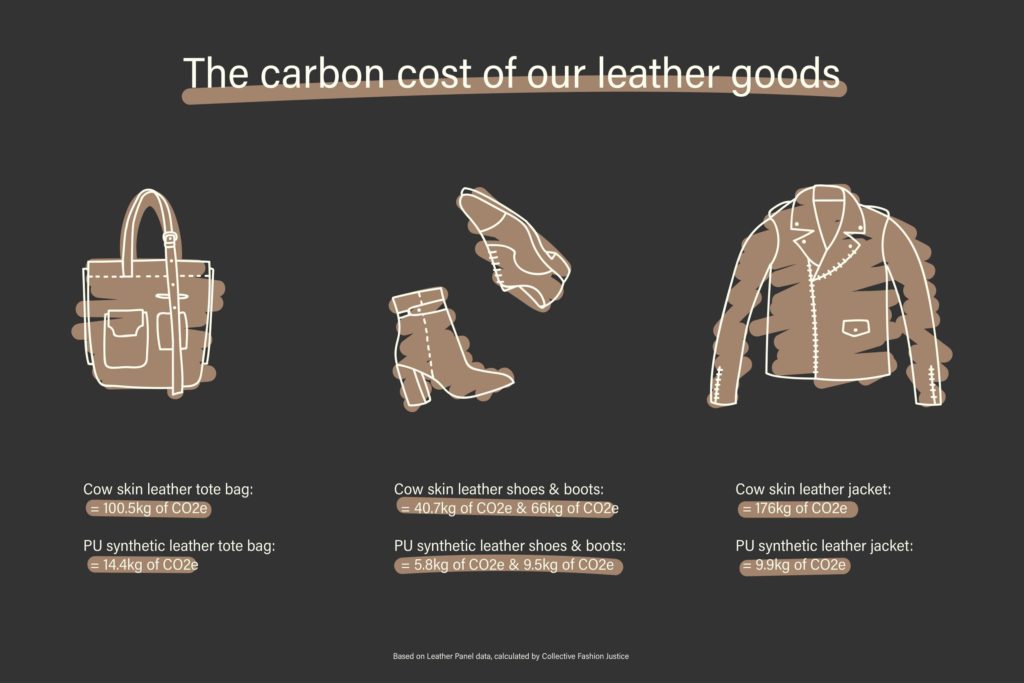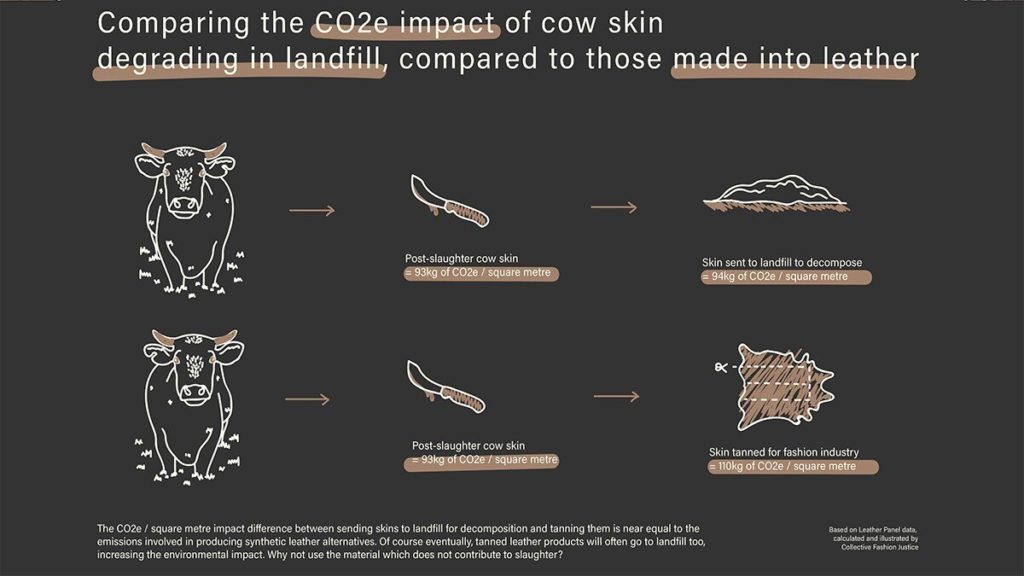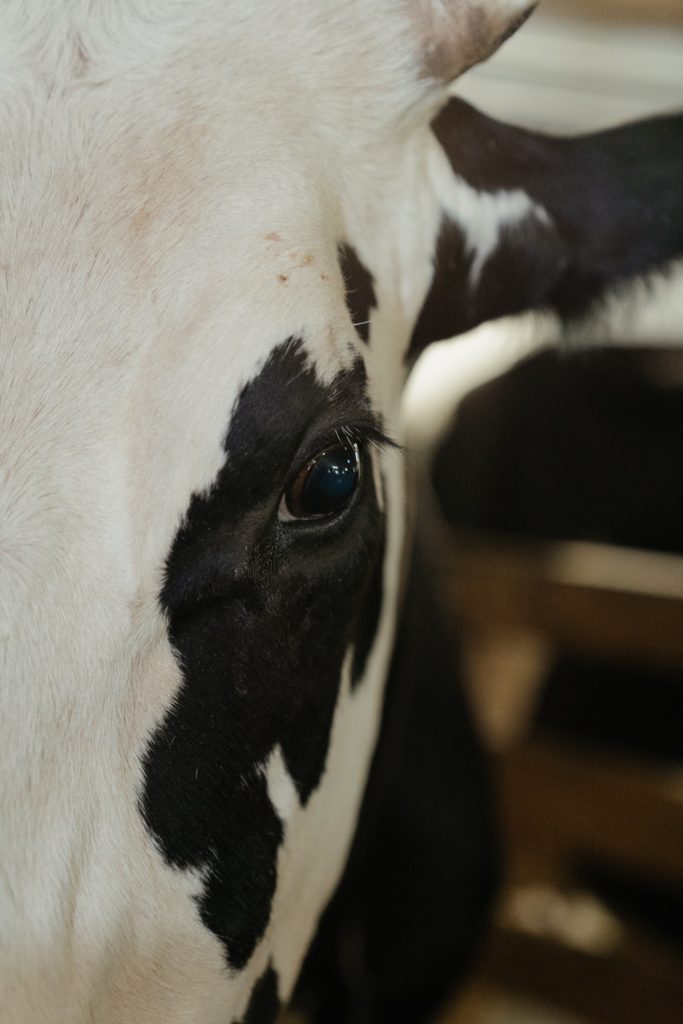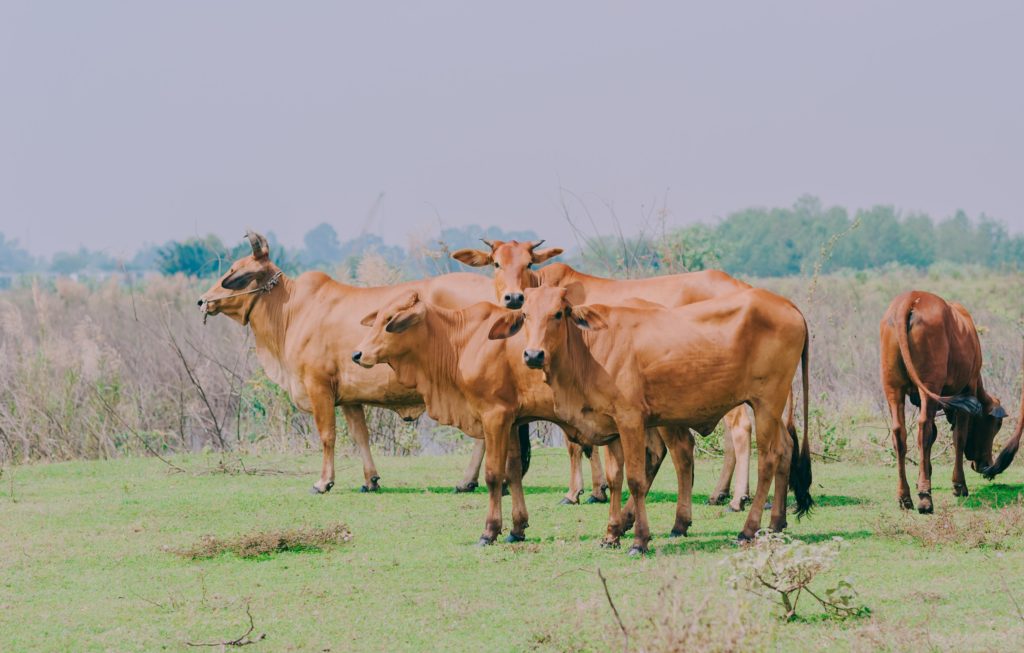This article has been co-written By Style with a Smile and Collective Fashion Justice’s Emma Hakansson.
Often when vegan garments, shoes and accessories are made, marketed and celebrated online, they’re met with lots of criticism:
“Vegan leather is just plastic!”
“Natural materials are the only real sustainable choice”
“Just because something is vegan doesn’t make it sustainable”
“Vegan is just a green-washing term”
“Vegan isn’t the same thing as ethical”
Let’s explore some of these claims, and whether vegan alternatives are a perfect solution.
Argument: ‘vegan leather is just plastic’.
Reality: It is true that the majority of vegan leather alternatives available in the market today are made using a certain amount of plastic. It can be in the backing, mixed in, and in the coating of materials (even bio-based ones) — ultimately proving just how difficult it can be to avoid plastic. And too often animal skin is coated in plastic, though this doesn’t need to be labelled. The reason for this – in both cases – are the improved material properties that plastic enables, such as durability and longevity, allowing the materials to maintain their composition, protection from moisture and humidity, and in some cases also provide a more unified look.
Here’s what we know, though: not only are there more plastic-free and bio-based vegan leather alternatives available, even polyurethane (the most common alternative to animal-derived leather), has a lesser impact on the environment to produce. And while it’s not biodegradable neither is leather, even when vegetable-tanned, according to industry research published in Tannery Magazine. This does not make PU a perfect sustainable alternative, but it certinely has a lower environmental impact:
According to the Higg Material Sustainability Index, PU synthetic leather production requires 14 times less water to produce, what’s more, Collective Fashion Justice calculations found that a pair of shoes made from this material, as opposed to cow skin leather, saves over 56kg of carbon equivalent emissions.


Argument: ‘Natural materials are the only real sustainable choice’
Reality: This argument creates a false dichotomy, where we’re made to believe we have to choose between ‘natural materials’ and ‘vegan materials’. This isn’t the case!
We can, for example, avoid wool, a resource heavy and cruel material, while also avoiding synthetics, by wearing organic and recycled cotton, Tencel, Hemp and other plant-based and cellulosic materials.
We can choose to refrain from wearing animal skin, and also avoid petroleum-based synthetics, by wearing cork leather with organic cotton backing, washable paper, Mirum, Treekind and other plastic-free materials.
It is worth noting too, that what is perceived as ‘natural’ isn’t always so. For example, in leather making, animal skins are treated in a long and complex process. The finished product as we know it has little to no resemblance to the natural, unprocessed animal hides. Instead, each of the steps in the leather making process have been designed to keep a natural skin from degrading and to make it last as long as possible.
Another question to ask is: is it natural for us to clear native land where native animals once lived, so that a non-native species can be bred (as many as a billion cattle are on this planet right now) specifically for their slaughter? 80% of the destruction in the Amazon rainforest has been to make way for cattle ranching. This mass deforestation causes habitat loss for millions of species and drives climate change. Animal agriculture and products of it, including leather, are leading contributors to climate change. Globally, animal agriculture is responsible for more greenhouse gases than the fuel exhaust from every plane, train, truck, and car in the world.


Argument: ‘Just because something is vegan doesn’t make it sustainable’.
Reality: This is absolutely right! Surprised by our answer to this one? Well, two things can be true at once. It is correct that a material classified as vegan does not mean it is a sustainable material. And it is also true that animal-derived materials are not sustainable. In fact, they are more harmful to the planet to produce than vegan alternatives, even if those are not yet perfect.
It’s important that we – and that fashion brands – do the best we can when it comes to choosing the most sustainable materials for their specific use. If we want to do that effectively, based on the best available data, we need to be avoiding all animal-derived materials, avoiding virgin synthetics, and unsustainable agricultural practises. Luckily, there are a wealth of materials that fall outside of these categories, that are innovative, more ethical, and better for the planet.


Argument: Vegan is just a green-washing term
Reality: Sometimes brands do use the term ‘vegan’ in their marketing in order to appear more ethical and sustainable than they are. However, this does not change the true meaning of ‘vegan’.
Veganism is a social justice movement which stands against the oppression of animals. Non-human animals are considered, amongst other things, ‘food’ and ‘clothing’ in our society, and veganism abstains from this view, instead treating animals as individuals. Veganism seeks to benefit, protect and liberate all animals – both human and non-human – as well as the planet.
If you see the term ‘vegan’ on a garment label, it likely isn’t referring to a social justice movement, but letting you know that the product contains no animal-derived materials – in line with a core vegan value. This is important information to know, but it’s also important we consider this information from a ‘total ethics fashion’ perspective, and consider the people and planet, too. Take everything you see with a grain of salt and don’t forget to do your research before purchasing.
Argument: Vegan isn’t the same thing as ethical
Reality: It is true that a product can be free from animal-derived materials and ingredients, but not be ethically produced in other ways – think, for example, of a vegan leather jacket sewn by a garment worker paid a poverty wage, or a vegan bag that’s made in fair conditions, but using PVC. This is where the term ‘total ethics fashion’ comes in. In order for fashion to be truly ethical and sustainable, it must address the wellbeing and safety of all animals – both humans and non-humans, as well as the planet. Otherwise, it isn’t truly ethical.
The same can be said of a vegetable-tanned leather bag made by someone paid and treated fairly – this is still not a truly ethical product, as it is made from the skin of a slaughtered individual, while also resulting in immense environmental harm, which impacts us all. Everything is connected, and we must seek to create a fashion system which values all life before profit.
are vegan alternatives perfect solutions?
The answer to the question is no, or at least not yet.
Although in fact, vegan materials have less of an environmental toll than animal-derived materials, by no means does this make them perfect themselves. The majority of vegan leather alternatives, for example, still rely on plastic-compounds. However, we are happy to see innovators such as Mirum, Treekind and MYKKO offering plastic-free vegan alternatives, but with them being new, we have not yet seen how they stand the test of time. Innovators are still working on finding a better alternative to the plastic compounds in their materials and in the meantime, we as conscious citizens and consumers are here to support, while also demanding more.
Every material carries its advantages and disadvantages, such as environmental impact, durability, biodegradability and composability – there are costs and benefits for different materials, and no one material is perfect. We believe that in order to achieve progress, we should cheer on innovators that strive to create total ethics fashion compliant materials and support them, while demanding better, and understanding that sustainability and innovation is a journey.
The fact that most vegan materials out there are not perfect does not negate the fact that neither are animal-derived materials, which are far more harmful for non-humans, humans and the planet. While no material is or will ever be perfect, some are objectively less impactful to produce, and we should be transitioning the industry away from those which cause more harm – even if that transition isn’t immediately flawless.
Want to learn more?
All references available at
collectivefashionjustice.org/planet
collectivefashionjustice.org/leather
More information about total ethics fashion: collectivefashionjustice.org/total-ethics-fashion
Learn more about total ethics fashion, material innovations and brands at www.stylewithasmile.co
Subscribe to our newsletter to be the first to know about new Style with a Smile posts and updates (spoiler: an extensive material library is coming soon!)


bsdmm